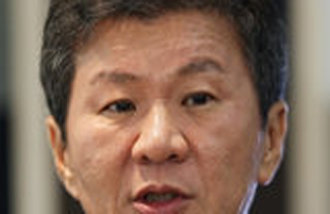20 Mil. Lost Generation in Japan
Even if I work, my life does not improve. I slowly look at my hands.
This is an excerpt from one of Ishikawa Takubokus poems published in 1910. He died at the age of 26. The passage is often quoted to express the harsh realities of the Japanese working poor. Although the Japanese poet worked day and night as a newspaper copy-editor, he always suffered from poverty.
○ Destined to live poor for life, Lost Generation
Lost Gene refers to the lost generation aged between mid-20s and mid-30s in Japan. According to the Japanese media estimate, some 20 million falls into the category of the lost gene and one-fourth of them are temporary workers. Many of this generation could not find regular jobs because of the hiring ice age (1994 - 2005), which followed the collapse of Japans bubble economy in the early 1990s.
Freeters (free arbeiter or part timers), subcontracted temporary workers and maintenance staff who are forced to work hundreds of hours overtime each month without financial compensation belong to the lost generation. Most of them cannot receive benefits from social welfare programs, such as the national pension and health care insurance. The average wage that they receive during their life time is one fifth of that of regular workers.
○ We envy crab fishermen
The Factory Ship (Kani Kosen), a proletarian literature published in the 1920s, is belatedly enjoying an explosive popularity among the lost generation in Japan. In the book, laborers, who are forced to catch and process crabs in the extreme cold weather in the ocean, have a strong resemblance to the lost generation who are enslaved by outsourcing companies that assign work to temporary works over the phone.
Some of the lost generation lament their situation, saying that the fishermen in the book are better off than them since, at least, they know who their enemies are.
The publisher of the book, which printed 2,000 copies of it per year for several decades, printed 7,000 copies this year alone. But due to the strong demand, it has recently printed additional 50,000 copies.
The lost generation has also been trying to unite in an attempt to raise their voices. Young Japanese took to the street all across Japan from April 27 to May 18 in connection with the Labor Day. In a rally held in Tokyo on May 3, they held banners, reading, We are not consumer goods, Give jobs to the lost generation.
○ Growing leftists might turn to imperialism
Super-leftish Magazine Lost Gene is expected to be published at the end of this month. The magazine will feature The Lost Gene Manifesto, a parody of the Communist Manifesto, according to the Asahi Shimbun.
A group of ghosts are wandering Japan in the name of the lost generation. We are nameless and we work, live and die every day. The number is 20 million. The Lost Gene in the nation! It is the right time to unite, the statement reads.
Satou Toshiki, author of Unequal Society Japan and professor at Tokyo University, said, The resistance against excessive capitalism and self-responsibility has revived the once collapsed left wing in Japan.
As the current concept of the left wing is conceptual, it should be called as the virtual left wing, he said, warning that they may turn into the extreme right and seek Japanese imperialism.
sya@donga.com







